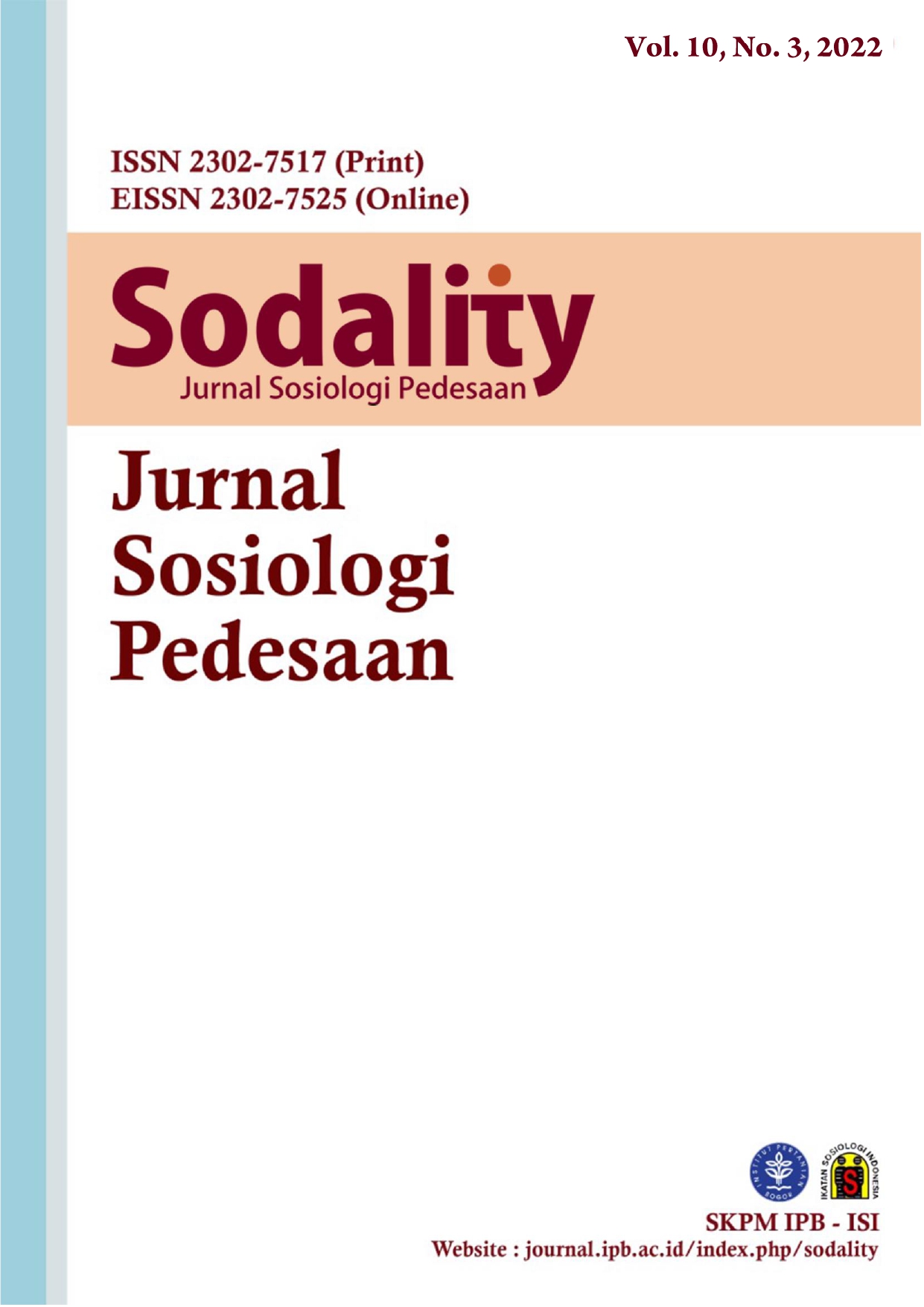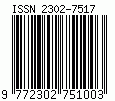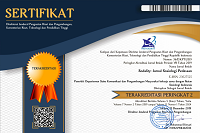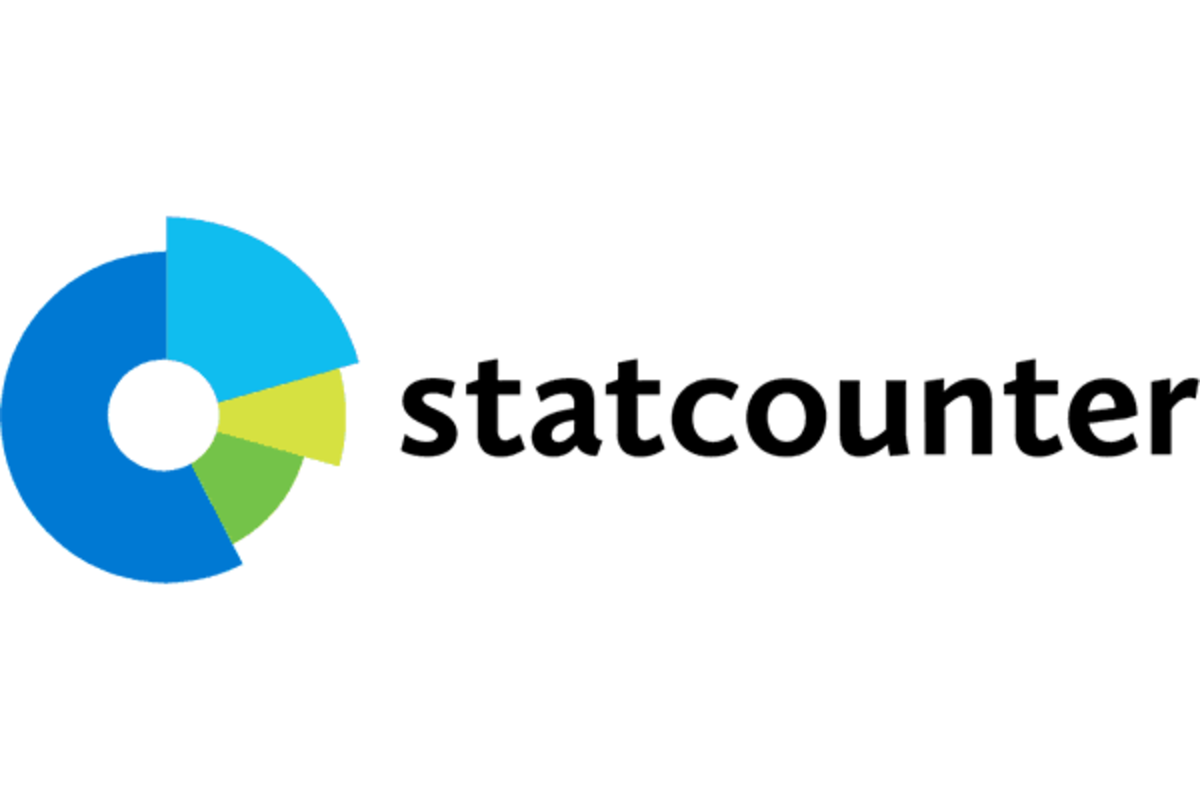Priority Strategies for Sustainable Community-Based Ecotourism Management on Kaniungan Besar Island, Indonesia
Abstract
The primary objectives of this study was to identify business models to serve as the basis and offering alternative planning strategies for managing sustainable eco-tourism. To support these objectives, some methods were employed, including field observations and in-depth interviews applying questionnaires with stakeholders and visitors. Also, BMC and QSPM integration models were applied to determine the main alternative strategies. Results revealed that the existing eco-tourism management did not fully resolve the weaknesses and threats. Thus, it is also not in line with the sustainable eco-tourism requirements. However, current management strategies in the study area will likely improve and achieve maximum progress if stakeholders consider its opportunities and strengths. The most priority for the strategy for sustainable eco-tourism management is formulating model of carrying capacity.
References
Agius, K., Theuma, N., Deidun, A., & Camilleri, L. (2019). Small islands as ecotourism destinations: A central mediterranean perspective. Island Studies Journal, 14(2), 115–136. https://doi.org/10.24043/isj.97
Ahmad, F., Draz, M. U., Su, L., & Rauf, A. (2019). Taking the bad with the good: The nexus between tourism and environmental degradation in the lower middle-income Southeast Asian economies. Journal of Cleaner Production, 233, 1240–1249. https://doi.org/10.1016/j.jclepro.2019.06.138
Aspiany, Anggoro, S., Purwanti, F., & Gunawan, B. I. (2019). Strategies for sustainable ecotourism development in the marine waters of Bontang City , Indonesia. AACL Bioflux, 12(5), 1779–1787. http://www.bioflux.com.ro/docs/2019.1779-1787.pdf
Bertram, G., & Poirine, B. (2007). Island Political Economy. In G. Baldacchino (Ed.), A World of Islands: An Island Studies Reader (Issue May, pp. 323–376).
Carvache-Franco, M., Carvache-Franco, O., Carvache-Franco, W., & Villagómez-Buele, C. (2020). From satisfaction in eco-tourism to loyalty in a national park. Geojournal of Tourism and Geosites, 28(1), 191–202. https://doi.org/10.30892/gtg.28115-462
Daby, D. (2003). Effects of seagrass bed removal for tourism purposes in a Mauritian bay. Environmental Pollution, 125(3), 313–324. https://doi.org/10.1016/S0269-7491(03)00125-8
Das, M., & Chatterjee, B. (2015). Ecotourism : A panacea or a predicament ? TMP, 14, 3–16. https://doi.org/10.1016/j.tmp.2015.01.002
David, F. R. (1986). The strategic planning matrix-a quantitative approach. Long Range Planning, 19(5), 102–107. https://doi.org/10.1016/0024-6301(86)90015-4
de los Monteros, R. L. E. (2002). Evaluating ecotourism in natural protected areas of La Paz Bay, Baja California Sur, Mexico: ecotourism or nature-based tourism? Biodiversity and Conservation, 11(9), 1539–1550. https://doi.org/10.1023/A:1016887417263
Diamantis, D. (2000). Ecotourism and sustainability in Mediterranean islands. Thunderbird International Business Review, 42(4), 427–443. https://doi.org/10.1002/1520-6874(200007/08)42:4<427::aid-tie5>3.0.co;2-g
Dolnicar, S., Grün, B., & Leisch, F. (2018). Market segmentation analysis: Understanding it, doing it, and making it useful. http://www.springer.com/series/10101
Fan, D. X. F., Buhalis, D., & Lin, B. (2019). A tourist typology of online and face-to-face social contact: Destination immersion and tourism encapsulation/decapsulation. Annals of Tourism Research, 78(July), 102757. https://doi.org/10.1016/j.annals.2019.102757
Fennell, D. A. (2010). Ecotourism and the Myth of Indigenous Stewardship Ecotourism and the Myth of Indigenous Stewardship. December 2014, 37–41. https://doi.org/10.2167/jost736.0
Ghorbani, A., Rau, V., Ra, P., & Azadi, H. (2015). Ecotourism sustainable development strategies using SWOT and QSPM model : A case study of Kaji Namakzar Wetland , South Khorasan. 16, 290–297. https://doi.org/10.1016/j.tmp.2015.09.005
Hidayah, Z., Rosyid, D. M., & Armono, H. D. (2016). Planning for Sustainable Small Island Management: Case Study of Gili Timur Island East Java Province Indonesia. Procedia - Social and Behavioral Sciences, 227(November 2015), 785–790. https://doi.org/10.1016/j.sbspro.2016.06.146
Hosseini, S. M., Paydar, M. M., & Triki, C. (2021). Implementing sustainable ecotourism in Lafour region, Iran: Applying a clustering method based on SWOT analysis. In Journal of Cleaner Production (Vol. 329). https://doi.org/10.1016/j.jclepro.2021.129716
Jalani, J. O. (2012). Local People’s Perception on the Impacts and Importance of Ecotourism in Sabang, Palawan, Philippines. Procedia - Social and Behavioral Sciences, 57, 247–254. https://doi.org/10.1016/j.sbspro.2012.09.1182
Kurniawan, F., Adrianto, L., & Bengen, D. G. (2016). Vulnerability assessment of small islands to tourism : The case of the Marine Tourism Park of the Gili Matra Islands , Indonesia. Global Ecology and Conservation, 6, 308–326. https://doi.org/10.1016/j.gecco.2016.04.001
Laitamaki, J., Tada, M., Liu, S., Setyady, N., Vatcharasoontorn, N., & Zheng, F. (2016). Sustainable Tourism Development Frameworks and Best Practices: Implications for the Cuban Tourism Industry. Managing Global Transitions, 14(1), 7–29. https://www.fm-kp.si/zalozba/ISSN/1581-6311/14_7-29.pdf
Ma, B., Yin, R., Zheng, J., Wen, Y., & Hou, Y. (2019). Estimating the social and ecological impact of community-based ecotourism in giant panda habitats. Journal of Environmental Management, 250(August), 109506. https://doi.org/10.1016/j.jenvman.2019.109506
Mallick, S. K., Rudra, S., & Samanta, R. (2020). Sustainable ecotourism development using SWOT and QSPM approach: A study on Rameswaram, Tamil Nadu. International Journal of Geoheritage and Parks, 8(3), 185–193. https://doi.org/10.1016/j.ijgeop.2020.06.001
Médail, F., & Quezel, P. (1999). Biodiversity Hotspots in the Mediterranean Basin: Setting Global Conservation Priorities. Conservation Biology, 13(6), 1510–1513. https://tokaipark.com/wp-content/uploads/2021/05/Medail-F-and-Quezel-P-1999-Biodiversity-Hotspots-in-the-Mediterranean-Basin-Setting-Global-Conservation-Priorities.pdf
Ministry of Marine Affairs and Fisheries Republic of Indonesia. (2013). Number of islands in Indonesia. Kementerian Kelautan Dan Perikanan.
Myers, N., Mittermeier, R. A., Mittermeier, C. G., da Fonseca, G. A. B., & Kent, J. (2010). Biodiversity hotspots for conservation priorities. Nature, 468(7326), 895. https://doi.org/10.1038/468895a
Navarro-martínez, Z. M., Marie, C., Hern, L., Mclaughlin, R. J., Ferro-azcona, H., & Patricia, S. (2020). Using SWOT analysis to support biodiversity and sustainable tourism in. 193(May). https://doi.org/10.1016/j.ocecoaman.2020.105188
Osterwalder, A., & Pigneur, Y. (2010). Business Model Generation: A Handbook for Visionaries, Game Changers, and Challengers. In A handbook for visionaries, game changers, and challengers. https://doi.org/10.1523/JNEUROSCI.0307-10.2010
Osterwalder, A., Pigneur, Y., & Tucci, C. L. (2005). Clarifying Business Models: Origins, Present, and Future of the Concept. Communications of the Association for Information Systems, 16(July). https://doi.org/10.17705/1cais.01601
Qian, C., Sasaki, N., Jourdain, D., Kim, S. M., & Shivakoti, P. G. (2017). Local livelihood under different governances of tourism development in China – A case study of Huangshan mountain area. Tourism Management, 61, 221–233. https://doi.org/10.1016/j.tourman.2017.01.006
Rudiastuti, A. W., Munawaroh, Setyawan, I. E., & Pramono, G. H. (2018). Coastal management strategy for small island: Ecotourism potency development in Karimata Island, West Kalimantan. IOP Conference Series: Earth and Environmental Science, 148(1). https://doi.org/10.1088/1755-1315/148/1/012013
Setiawan, J., Budiastuti, M. S., Gravitiani, E., & Setyono, P. (2021). Business model canvas (BMC) approach for tourism management strategy of the top selfie kragilan, Mt. Merbabu National Park. Geojournal of Tourism and Geosites, 35(2), 297–303. https://doi.org/10.30892/GTG.35205-651
Slávik, Š., & Bednár, R. (2014). Analysis of Business Models. Journal of Competitiveness, 6(4), 19–40. https://doi.org/10.7441/joc.2014.04.02
Szopa, P., & Pękała, W. (2012). Distribution Channels and Their Roles in The Enterprise. Polish Journal of Management Studies, 6, 143–150. https://www.semanticscholar.org
Toro-Jarrín, M. A., Ponce-Jaramillo, I. E., & Güemes-Castorena, D. (2016). Methodology for the of building process integration of Business Model Canvas and Technological Roadmap. Technological Forecasting and Social Change, 110, 213–225. https://doi.org/10.1016/j.techfore.2016.01.009
UNWTO. (2017). UNWTO Tourism Highlights 2017 Edition. https://www.e-unwto.org/doi/pdf/10.18111/9789284419029
Wearing, S., & Neil, J. (2009). Ecotourism (2nd ed.). Routledge. https://doi.org/10.4324/9780080940182
Weaver, D. B. (2017). Core–periphery relationships and the sustainability paradox of small island tourism. Tourism Recreation Research, 42(1), 11–21. https://doi.org/10.1080/02508281.2016.1228559
Wirtz, J., & Jerger, C. (2016). Managing service employees: literature review, expert opinions, and research directions. Service Industries Journal, 36(15–16), 757–788. https://doi.org/10.1080/02642069.2016.1278432
Wiryawan, B., & Tahir, A. (2013). Experiences in zonation planning for management of marine protected area: the Indonesian case. Galaxea, Journal of Coral Reef Studies, 15(Supplement), 285–294. https://doi.org/10.3755/galaxea.15.285
Authors who publish with this journal agree to the following terms:
- Authors retain copyright and grant the journal right of first publication with the work simultaneously licensed under a

This work is licensed under a Creative Commons Attribution 4.0 International License. that allows others to share the work with an acknowledgement of the work's authorship and initial publication in this journal. - Authors are able to enter into separate, additional contractual arrangements for the non-exclusive distribution of the journal's published version of the work (e.g., post it to an institutional repository or publish it in a book), with an acknowledgement of its initial publication in this journal.
- Authors are permitted and encouraged to post their work online (e.g., in institutional repositories or on their website) prior to and during the submission process, as it can lead to productive exchanges, as well as earlier and greater citation of published work (See The Effect of Open Access).





.png)









